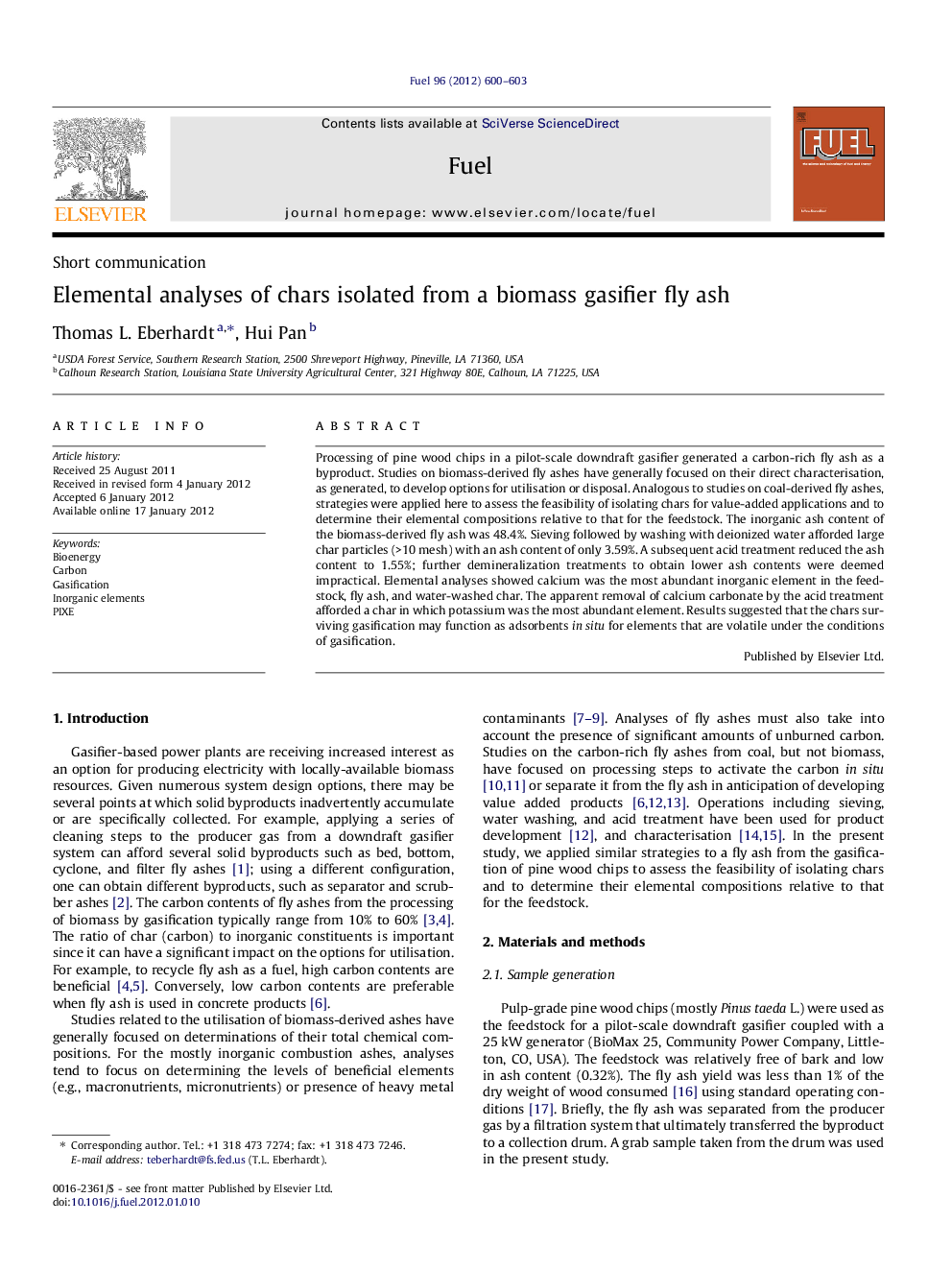| Article ID | Journal | Published Year | Pages | File Type |
|---|---|---|---|---|
| 6644463 | Fuel | 2012 | 4 Pages |
Abstract
Processing of pine wood chips in a pilot-scale downdraft gasifier generated a carbon-rich fly ash as a byproduct. Studies on biomass-derived fly ashes have generally focused on their direct characterisation, as generated, to develop options for utilisation or disposal. Analogous to studies on coal-derived fly ashes, strategies were applied here to assess the feasibility of isolating chars for value-added applications and to determine their elemental compositions relative to that for the feedstock. The inorganic ash content of the biomass-derived fly ash was 48.4%. Sieving followed by washing with deionized water afforded large char particles (>10 mesh) with an ash content of only 3.59%. A subsequent acid treatment reduced the ash content to 1.55%; further demineralization treatments to obtain lower ash contents were deemed impractical. Elemental analyses showed calcium was the most abundant inorganic element in the feedstock, fly ash, and water-washed char. The apparent removal of calcium carbonate by the acid treatment afforded a char in which potassium was the most abundant element. Results suggested that the chars surviving gasification may function as adsorbents in situ for elements that are volatile under the conditions of gasification.
Related Topics
Physical Sciences and Engineering
Chemical Engineering
Chemical Engineering (General)
Authors
Thomas L. Eberhardt, Hui Pan,
